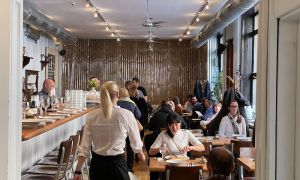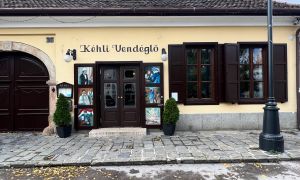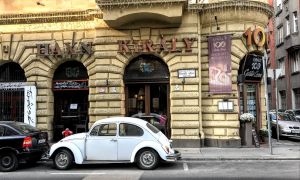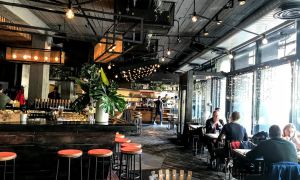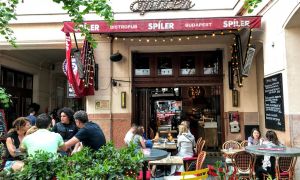Hungary's most famous food, the goulash, is a crimson-hued beef soup laced with vegetables and imparting the sweet-sharp flavor of fresh paprika. The dish is named after the herdsmen in eastern Hungary – the gulyás – who prepared this hearty soup in large cast-iron kettles. Few people cook it over open fire these days, but the goulash is still a beloved staple across households in Hungary. In restaurants, prices usually range €6-10 for a bowl.
Gett�ó Gulyás is a cozy Hungarian restaurant inside Budapest's party district, also known as the old Jewish Quarter. The short menu features the heart of Magyar cuisine with staples like goulash, chicken and veal paprikash (€11-15), and various seasonal vegetable stews called főzelék. "Gettó" refers to the Jewish ghetto, what this neighborhood became during the winter of 1944, the darkest time in Budapest's history.
Don't sleep on the desserts, of which the ground walnut-filled crepes (Gundel palacsinta) and the cottage cheese dumplings (túrógombóc) are both excellent. Hungarian wines are available for pairing.
My only issue with Gettó Gulyás is also a compliment: these reliable Hungarian dishes have become so popular among visitors that the absence of Hungarian patrons can detract from the experience. Advance reservation is an absolute must (forget about scoring a same-day booking). Before your meal, you could grab a drink at Szimpla Kert, the famous ruin bar just steps away in Kazinczy Street.


